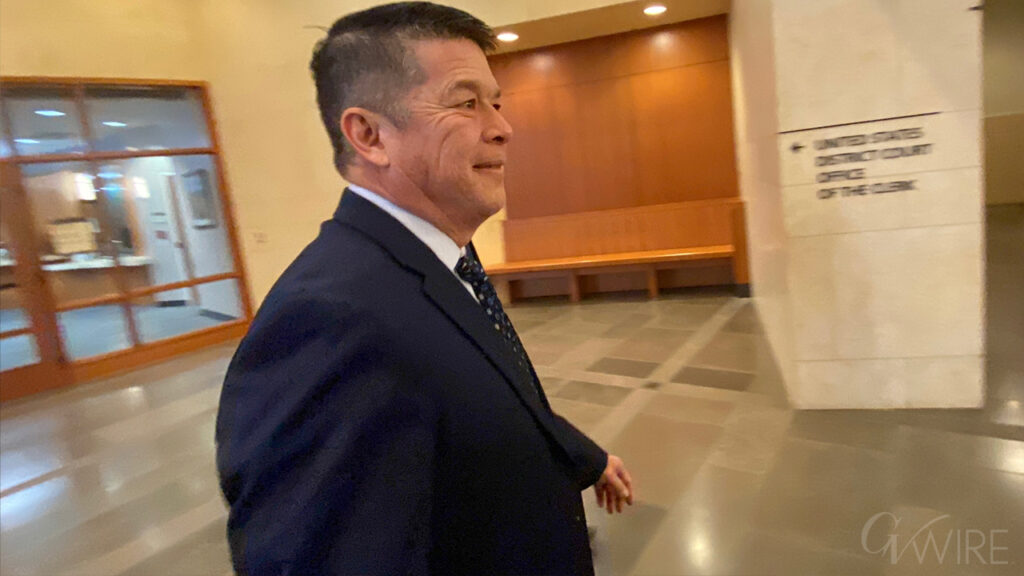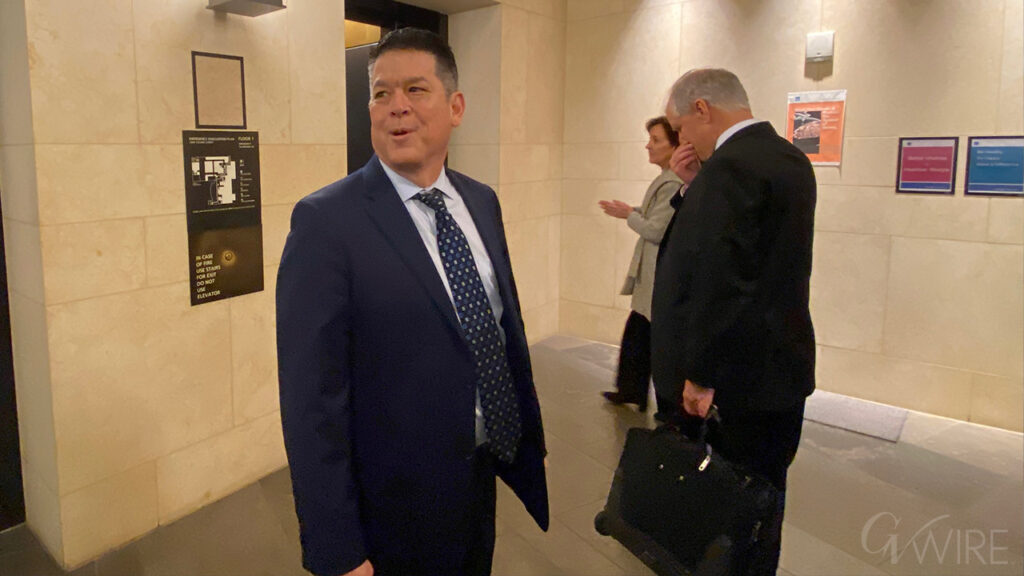A photo provided by Mississippi State University shows NASA engineer Robert “Ed” Smylie with a command module used during the Apollo space missions. Smylie, who led a team of engineers that designed an emergency apparatus made of cardboard, plastic bags and duct tape, saving the Apollo 13 crew after an explosion, died April 21, 2025, in Crossville, Tenn. He was 95. (Mississippi State University via The New York Times)

- A Southern engineer who saved Apollo 13 with cardboard, plastic bags and duct tape has died at 95, leaving behind a legendary NASA legacy.
- Smylie led a team that created an emergency CO2 filter adapter when astronauts faced lethal carbon dioxide buildup in their crippled spacecraft.
- President Nixon awarded NASA's team the Presidential Medal of Freedom, specifically praising Smylie's ingenious jury-rigged solution that saved lives.
Share
Robert “Ed” Smylie, the NASA official who led a team of engineers that cobbled together an apparatus made of cardboard, plastic bags and duct tape that saved the Apollo 13 crew in 1970 after an explosion crippled the spacecraft as it sped toward the moon, died April 21 in Crossville, Tennessee. He was 95.
His death, at a hospice facility, was confirmed by his son, Steven.
The day after astronauts Jim Lovell, Jack Swigert and Fred Haise returned to Earth on April 17, 1970, President Richard Nixon awarded NASA’s mission operations team with the Presidential Medal of Freedom. In his remarks, he singled out Smylie and his deputy, James V. Correale.
“They are men whose names simply represent the whole team,” Nixon said at a ceremony at the Manned Spacecraft Center in Houston. “And they had a jerry-built operation which worked, and had that not occurred, these men would not have gotten back.”
Soft-spoken, with an accent that revealed his Mississippi upbringing, Smylie was relaxing at home in Houston on the evening of April 13 when Lovell radioed mission control with his famous (and frequently misquoted) line: “Uh, Houston, we’ve had a problem.”
An oxygen tank had exploded, crippling the spacecraft’s command module.
Smylie, who lived five houses down from Haise, saw the news on television and called the crew systems office, according to the 1994 book “Lost Moon” by Lovell and journalist Jeffrey Kluger. The desk operator said the astronauts were retreating to the lunar excursion module, which was supposed to shuttle two crew members to the moon.
“I’m coming in,” Smylie said.
A Life-Threatening Crisis
Smylie knew there was a problem with this plan: The lunar module was equipped to safely handle air flow for only two astronauts. Three humans would generate lethal levels of carbon dioxide.
To survive, the astronauts would need to somehow refresh the canisters of lithium hydroxide that would absorb the poisonous gases in the lunar excursion module. There were extra canisters in the command module, but they were square; the lunar module ones were round.
“You can’t put a square peg in a round hole, and that’s what we had,” Smylie said in the documentary “XIII” (2021).
He and about 60 other engineers had less than two days to invent a solution using materials already onboard the spacecraft.
Their ingenious solution: an adapter made of two lithium hydroxide canisters from the command module, plastic bags used for garments, cardboard from the cover of the flight plan, a spacesuit hose and a roll of gray duct tape.
“If you’re a Southern boy, if it moves and it’s not supposed to, you use duct tape,” Smylie said in the documentary. “That’s where we were. We had duct tape, and we had to tape it in a way that we could hook the environmental control system hose to the command module canister.”
Mission control commanders provided step-by-step instructions to the astronauts for locating materials and building the adapter. In between steps, they joked about taxes. (It was, after all, April.)
“OK, Jack,” one of the commanders radioed. “Did anybody ever tell you that you got a 60-day extension on your income tax? Over.”
“Yes,” Swigert replied. “I think somebody said that when you are out of your country, you get a 60-day extension.”
The adapter worked. The astronauts were able to breathe safely in the lunar module for two days as they awaited the appropriate trajectory to fly the hobbled command module home. They landed in the Pacific Ocean with plenty of time to file their taxes (thanks to the extension).
“We would have died had their solution not worked,” Haise said in an interview. “I don’t know what more you can say about that.”
From Mississippi to Mission Control
Robert Edwin Smylie, known as Ed, was born on Dec. 25, 1929, in Lincoln County, Mississippi, on his grandfather’s farm. His father, Robert Torrey Smylie, delivered ice and later managed an ice-making facility. His mother, Leona (White) Smylie, oversaw the home.
After serving in the U.S. Navy, Smylie studied mechanical engineering at Mississippi State University, earning a bachelor’s degree in 1952 and a master’s in 1956. He pursued a doctorate at UCLA but didn’t finish.
In 1962, he was working at Douglas Aircraft Co. in California when President John F. Kennedy announced plans to send astronauts to the moon.
“I was a young engineer and just wanted to be there and help make it happen,” Smylie said in a NASA oral history.
He applied for a job at the space agency in Houston, initially working in the environmental control section. He eventually became chief of the crew systems division, which was responsible for the life-sustaining equipment used by Apollo astronauts in space.
The Humble Hero’s Legacy
Smylie’s marriage to June Reeves in 1954 ended in divorce. He married Carolyn Hall in 1983; she died in 2024.
In addition to Steven, his son, he is survived by his daughters, Susan Smylie and Lisa Willis; stepchildren Natalie and Andrew Hall; 12 grandchildren; and 15 great-grandchildren.
Smylie’s lifesaving invention was a seminal moment in the storied history of duct tape, the jack-of-all-trades tool kit item.
“Duct tape has come to enjoy a kind of heroic and ever more pervasive presence in American life,” Tisha Hooks observed in “Duct Tape and the U.S. Social Imagination,” the dissertation she wrote at Yale University in 2015.
“From the Apollo 13 mission to the broken basement pipe,” she wrote, “duct tape is there.”
—
This article originally appeared in The New York Times.
By Michael S. Rosenwald/Mississippi State University
c. 2025 The New York Times Company



















